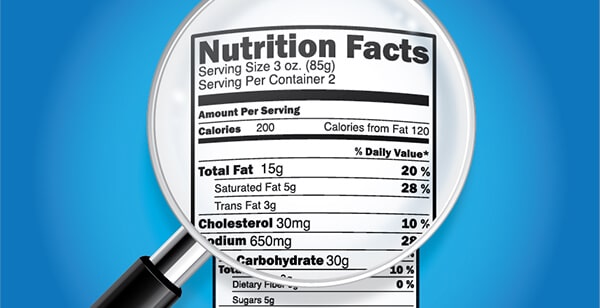A study by the South African Medical Research Council (SAMRC) Developmental Pathways to Health Research Unit (DPHRU) into fast food nutrition labelling found that just 58% of South African biggest fast food retailers surveyed provide nutritional information on their products.
Food labels are vital as they provide factual information to consumer to make informed choices about which foods or drinks to buy when shopping. Consumers can also compare and choose products easily, know what ingredients or nutrients are contained in particular foodstuffs.
The study further revealed that the nutritional content of burger, chips, and soft drink combo meals are not nutritionally equal. Researchers involved in the study say the labelling of fast food products, using a “traffic light’ red, yellow green graphic labelling system is crucial in enabling South African consumers to make informed nutritional decisions.
Titled: Should fast-food nutritional labelling in South Africa be mandatory?, the study was published in the South African Journal of Clinical Nutrition on 2 December 2021.

SA fast-food not providing nutritional facts
Dr Siphiwe N Dlamini, lead author of the study and a post-doctoral research fellow at the SAMRC’s DPHRU said: “The provision of fast food nutritional information is mandatory to the public in countries such as the US, Canada, Australia, Ireland, Saudi Arabia, South Korea, Taiwan, and United Arab Emirates. However, South African fast food restaurants are not compelled to provide any form of nutritional information.”
He said the study’s primary aim was to:
- determine the proportion of fast-food restaurants that provide nutritional information,
- describe the nutritional information of similar food items and meal combinations across the fast-food restaurants, and
- use a graphical labelling system to describe these data.
The DSI-NRF Centre of Excellence in Human Development hosted by the Wits University supports the study, which scientists at the DPHRU and the African Centre for Obesity Prevention (ACTION) conducted.

Sample of the study
A sample of 31 of the biggest fast-food restaurants in South Africa formed part of the study to estimate the proportion of those that provided nutritional information on their websites or outlets, according to Dr Dlamini. Energy, protein, fat, carbohydrate, salt and sugar nutrient compositions were compared for similar food items (burger or pizza), and a meal combination that included burger or pizza, medium-size fried chips and a sugar-sweetened beverage. The UK Traffic Light labelling system was used to compare fat, salt and sugar across restaurants. This graphic labelling system shows the quantity of each nutrient and whether this was high (red), medium (orange), or low (green).
Meal combinations
While all burgers were high in protein, some were also high in fat, salt and sugar, as indicated by percentages of the nutritional reference ranges above 30%. This was also the case for pizzas. All meal combinations particularly exceeded the total recommended energy; carbohydrates, sugar and salt content, and most also exceeded the recommended fat content. The study concluded that the consumption of popular South African fast foods may disproportionally contribute to the daily intakes of total energy, fat, salt and sugar, especially when consumed as combination meals including fried chips and sugar-sweetened beverages. Said Dlamini: “Consumers should limit their fast-food intake and avoid eating meal combinations.” He added that the South African government should consider regulations that make nutritional labelling of fast foods mandatory so that consumers can make informed dietary choices.
Increasing awareness
While the availability of nutritional information is important, it is equally important that fast food nutritional information labelling be easy to understand and recognisable by consumers. The traffic light approach could help consumers to interpret and understand the nutritional value of different meals and in turn increase their awareness and consideration around dietary choices, concluded Dr Dlamini.





